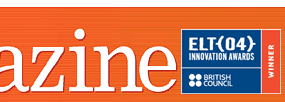|
by Dr
June Hassall
•
Guide to becoming a good writer
• Different kinds of
composition
• Useful tools
• In the next issue
| • |
Observe carefully everything around you. |
| • |
Record interesting ideas in a notebook. |
| • |
Choose a subject you really like. |
| • |
Decide what you want to achieve from your writing
– think about which kind of composition you
are writing. |
| • |
Plan the main outline and write it down. |
| • |
Use your ideas and your plan for a first draft. |
| • |
Revise what you have written. |
| • |
Prepare the final version either in neat handwriting,
or using a computer. |
| • |
Show your writing to others. |
top
Narratives
These tell a story or give an account of something that happened. They
can repeat facts or can be imaginary (made up). They are often written
in the past tense and may include speech to add variety.
Journal writing
This is a personal record of the things that happen to you, and of the
feelings you have. You can decide if you are going to keep the journal
just for yourself, or share it with others. You can use an informal style
and develop your own abbreviations and codes.
Descriptive writing
This 'paints a picture' using words. Descriptions tell what something
or someone is like, or how to do something. When you write a description,
imagine you are writing it for someone who has never seen, felt, smelt,
heard, or tasted what you are describing. You can also include sections
of descriptive writing within narratives and journal writing.
Explanatory writing
First make sure you understand what you want to explain. Imagine you are
telling a younger person what they should do. Use facts and not opinions.
Use diagrams if these help.
Persuasive writing
This covers describing different points of view – opinions –
about something. You write in order to convince your reader to agree with
you. This style of writing is often used in the Essay section of examinations.
Playscripts
These list the dialogue (words spoken by the characters), together with
descriptions of the actions and the way in which the words should be said.
Summaries
Read and understand the material. Then pick out the main ideas, and list
them. Now put the main ideas together in your own words to write your
summary. Writing summaries is also a good way to revise.
Book reports
This is a summary about a book you have read that gives enough information
to other people for them to decide if they would like to read it. You
summarize the story and say if you enjoyed it. List the title, publisher,
and author and describe the setting, characters, and plot.
Poetry
This often has short lines that are not complete sentences. It uses rhyme
and rhythm to express feelings. Poems describe a person, place, or idea
about which the writer feels strongly. You can use a pattern for writing
a poem, or make up your own style.
top
Planning
First decide on the kind of writing you are going to do. Then write down
any ideas related to the topic that you have chosen or been given. Use
this for recalling facts in an exam, for listing steps in an explanation,
for creating new characters and plot in a narrative or playscript, or
for planning a book report or poem.
For persuasive writing it is useful to make a table of
alternative opinions, and for poetry to note down sets of rhyming words.
Then add numbers to your ideas to put them into a sensible order. As you
do this you will think of other ideas to add.
Vocabulary and spelling
Your vocabulary (words you use) is related to the composition. For example,
you can use informal vocabulary in your journal, in a poem, or in text
messages, but not in an essay for an exam. You should also use proper
scientific terms in Science. Expand your vocabulary by recording new words
and meanings in a notebook.
In an exam there will be some marks awarded for spelling,
so it is always useful to check new words using a dictionary. Try to find
and remember similar patterns in spelling words.
Sentence structure
Poems have their own patterns, and the style used in journals can be very
personal. For other writing, try to vary the style, length, and complexity:
Phrases are incomplete sentences: they do not
have a verb or a subject.
Sentences have a verb and a subject and make complete sense.
Some examples are statements, questions, and exclamations.
Simple sentences have just one main clause, containing one subject
and one verb.
Compound sentences are made by joining two simple sentences and
so have two main clauses.
Complex sentences contain one main clause and two or more minor
or subordinate clauses.
Parts of speech
Use these correctly:
Noun: a naming word. Common nouns (lower case
letters) are general names such as baby and idea. Proper
nouns (capital letters) name special people, places, or things, such
as Charles Darwin and The Great Wall of China.
Verb: an action word. This describes what something does, for
example 'Tom kicked the ball', or the state of being, for example
'I slept'. The verb 'kicked' has an object (ball) and so it is
called a transitive verb. The verb 'slept' does not have an object and
so it is called an intransitive verb.
Adjective: a describing word. It usually, but not always, comes
before the noun or pronoun it describes, for example 'she had a pretty
face'.
Adverb: a word that describes a verb - how, when, or where something
happens, for example 'he drove quickly to the hospital'. It also
describes adjectives or other adverbs, for example 'she had an extremely
pretty face' or 'he drove very quickly to the hospital'.
In descriptive writing several adjectives or adverbs can be used together.
They can also be used to compare two or more things, for example 'taller,
tallest' and 'quickly, more quickly'.
Pronoun: stands in for a noun, for example he, she,
it, him, her, them.
Preposition: describes how one person or thing relates to another:
The cat is under the table.
Conjunction: a joining word, and one that introduces another
part of a sentence, for example and, but, or, because,
although.
Figurative language
Some examples:
Similes: these compare two things using 'as',
'like', and 'as ... as', for example 'swift as the wind'.
Metaphors: these say one thing is another, for example 'She is
a rock' (very dependable).
Onomatopeia: using words that sound like the actual sound, for
example 'a creaking chair'.
Paragraphs
A paragraph is a set of sentences that go together. You need a new paragraph
when you introduce a new person or place, or a change of time or idea.
One pattern to use is:
The first sentence gives the main idea.
This is followed by the body of the paragraph that develops the idea
and gives examples.
The last sentence sums up the information or gives the main idea in
a slightly different way.
Linking words
These are words and phrases such as first, next, after
that, and finally that help the reader to follow the order
of a book report or of explanatory or persuasive writing.
top
Next month in MED Magazine you can read about punctuation
and the use of capital letters in English.
top
|





